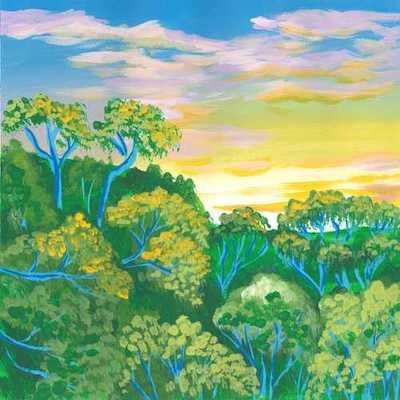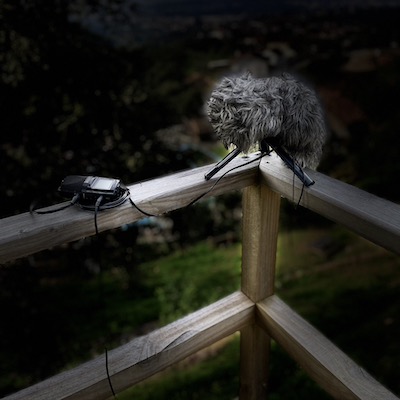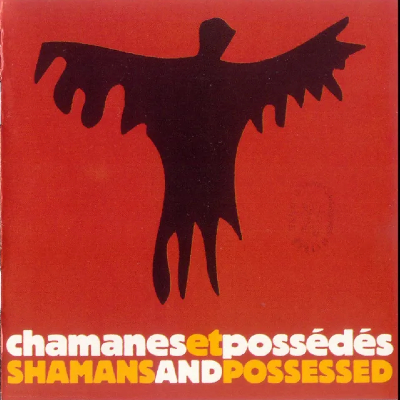OCDS | emissão 125 | 2024.02.27 | Quénia (uma viagem sonora em Masai Mara)
Partindo da excelsa plataforma earth.fm - https://earth.fm - O Colecionador de Sons viaja até a Masai Mara, no Quénia, para mais 57 minutos de puro deleite sonoro, atravésdas gravações sonoras de campo de Martha Mutiso (https://earth.fm/artists/martha-mutiso/)Este é o link para escutarem a peça na íntegra: https://earth.fm/podcast/morning-chorus-in-the-masai-mara/Bem-Vindos!
OCDS | emissão 124 | 2024.02.20 | da Costa Rica (uma viagem sonora)
Partindo da excelsa plataforma earth.fm - https://earth.fm - O Colecionador de Sons viaja até à Costa Rica em 57 minutos de puro deleite sonoro, através das majestosas
gravações sonoras de campo de George Vlad (https://earth.fm/artists/george-vlad/)
Este é o link para escutarem a peça na íntegra: https://earth.fm/podcast/dawn-in-the-rainforest-sounds-of-costa-rica/ Bem-Vindos!
OCDS | emissão 123 | 2024.01.30 | da Beira Serra à Costa Vicentina (uma viagem sonora)
A emissão 123 d'O Colecionador de Sons faz uma viagem por 2 concelhos da zona centro do país (Poiares e Oliveira do Hospital) e também pelo concelho de Sines
(Foros de Pouca Farinha, Porto Covo), gravando as suas paisagens sonoras rurais. Bem-Vindos!
00:00-00:46 - 04:00
00:46-12:38 - recreio da fraga vnpoiares
12:05-38:18 - qta da regada bobadela
38:00-57:00 - foros de pouca farinha porto covo
56:15-57:00 - 16:00
OCDS | emissão 122 | 2024.01.16 | The Great Animal Orchestra, by Bernie Krause
A emissão 122 d'O Colecionador de Sons vai ao encontro da fantástica obra de Bernie Krause, através do disco e instalação sonora imersiva The Great
Animal Orchestra (https://www.youtube.com/watch?v=btrinTDDjnQ). O texto abaixo enquadra este trabalho, assim como aspectos da obra de Krause.
Bem-Vindos!
///
Over the course of nearly fifty years, Bernie Krause has collected more than 5,000 hours of recordings of natural habitats, including at least 15,000
terrestrial and marine species from all around the world. This trained musician quickly discovered the musical harmony and quasi-orchestral
organization of animal vocalisations in the natural world. He is passionate about these natural musical compositions, or “soundscapes,” in which the
sounds of the earth, including the sounds of the wind and the rain, also have their place.
Bernie Krause’s approach is unique. Contemplating the natural world as a poet, listening to animal vocalizations as a musician, Bernie Krause also
studies it all scientifically. The analysis of the graphic representation of these soundscapes via spectrograms reveals that the sounds of the animal
world, often perceived as nonsensical noises, are actually as carefully orchestrated as the most complex musical scores. The study of the acoustic
organization of a particular ecosystemshows that at the heart of a soundscape each species spontaneously finds its own “acoustic niche.” Yet the
observation of Bernie Krause’s soundscapes also reveals that the great animal orchestra, increasingly threatened by human activities, now risks
being reduced to total and utter silence.
The Great Animal Orchestra was commissioned by the Fondation Cartier pour l’art contemporain as an immersive installation in 2016.
London-based studio United Visual Artists (UVA) imagined a visual translation of Bernie Krause’s soundscapes, allowing to listen to sounds and
visualize them simultaneously.
They designed a three-dimensional electronic installation, which is akin to the detail and complexity of a musical score, transposing the data from
the recordings into light particles, thus highlighting the beauty of the sound environments presented. Their audiovisual experience offers an
immersive journey through seven territories recorded by Bernie Krause, chosen for their ecological diversity and the richness of their biophony,
from Canada to the Central African Republic, from the United States to Zimbabwe, from Brazil to the oceans. In a movie sequence realized by
Raymond Depardon and Claudine Nougaret projected in between the soundscapes of the installation, Bernie Krause explains more about his
approach and how biodiversity has dramatically deteriorated in recent decades. Presented successively in France, Korea, China, Italy and at 180
The Strand, London in the United Kingdom, the installation has been seen and listened to by a large and diverse international audience.
Combining aesthetics and technology, the installation The Great Animal Orchestra simultaneously offers an immersion into the heart of the sounds
of nature, and a sound and visual meditation on the necessity of preserving the beauty of the animal world.
Label: The Vinyl Factory – VF339, Fondation Cartier Pour L'Art Contemporain – none
Format: 2 × Vinyl, LP
Country: UK
Released: 30 Sep 2019
OCDS | emissão 121 | 2024.01.09 | Chamanes et Possédés/Shamans and Possessed
Nesta primeira edição d'O Colecionador de Sons para 2024, entramos no baú universal e resgatamos 9 das 11 faixas presentes no disco
"Shamans and Possessed", da autoria de Henri Lecomte, para a colecção Musique du Monde.
Bem-Vindos!
Chamanes Et Possédés: Since time immemorial, man has tried to communicate with the world of spirits, beyond phenomenal appearances.
Such prehistorians as Jean Clottes, even think that the rupestral paintings of the Chauvet Grotto, in the Ardèche department in southern France,
reveal traces of shamanic beliefs in Europe, that are thought to date back some twenty thousand years. Whatever the geographical extension of
shamanism could have been, (Jean Clotte's thesis has been much criticized) it is a conception of the world that has remained truly alive, as can be
heard on these recordings made in recent years, in Siberia, Indonesia or the Amazonas. In shamanic belief, the world is divided into three parts:
theupper world, the middle world and the world below. The role of the shaman is to travel between the three worlds in order to intercede/mediate with
the spirits for his community. His function can be therapeutical, since illness is not due to "natural" causes but generally comes from the
non-observance of the rules defining the relations between individuals and the rest of the universe (i.e. creating a disorder that has to be controlled).
It also comprises divination and, at least in Siberia, it has a very important cynegetic role: animals are not killed because of the hunter's skills,
rather theyoffer themselves to be killed when the hunter has respected scrupulously the behaviour rules of the tundra or taiga.
The modern forms of Siberian shamanism have made this concept evolve towards a veryenvironmental ideology. One day, the community must give
back what it has taken, and - independently from other more "mystical" aspects - the main function of the shaman is to give back as little as
possible and aslate as possible. In the initiation, the shaman symbolically "dies" andis born again after allying - sometimes sexually -
with the spirits. He is then able to travel in the three worlds, by singing with the accompaniment of a musical instrument, usually a drum in Siberia,
Central Asia, the Himalaya and Northern America, and a rattle in the Amazonas. But the shamanic conception of the world is characterised by its
great faculty of adaption, and therefore would not preclude the use of an electric guitar or a synthesiser. There are even forms of shamanism,
as in Central Asia, where the musical instrument is sometimes replaced by a whip or a knife. In possession rituals, the possessed is not his own
"music maker" and the musician generally does not get into a trance. Instrumentalists play melodic-rhythmic formulas associated with a given spirit,
which will come and "ride" the possessed. In Haiti, these formulas are called "blasons" and each one is linked to a loa that comes and rides those
who have discovered, during initiation, which divinity would "mount" them. The possessed then starts to follow the archetypal behaviour of his divinity.
Roger Bastide, in one of his books about Brazilian Candomble, describes "a smiling young woman (...) who becomes serious and cruel, with her
lips condescendingly moving forward, her head firm, her gait like that of a monarch: she is Xango". The worlds of shamanism and possession may
be less far apart than we have been taught by structuralism. There are many similarities between the two, such as symbolic death followed by
rebirth during initiation or "feeding" the drums in thecandomble while "animating" them in Siberian shamanism.
Likewise, the poteau-mitan (middle pole) which is set up in the middle of Haitian voodoo sanctuaries evokes the tree, the axis mundi that can be
found in the rituals of Siberian or Nepalese shamans. But above all, the shamans and the possessed have the same function: to re-establish the
always threatened cosmic order. Their prime function, following the expression used by Bertrand Hell is to be "the masters of disorder".



